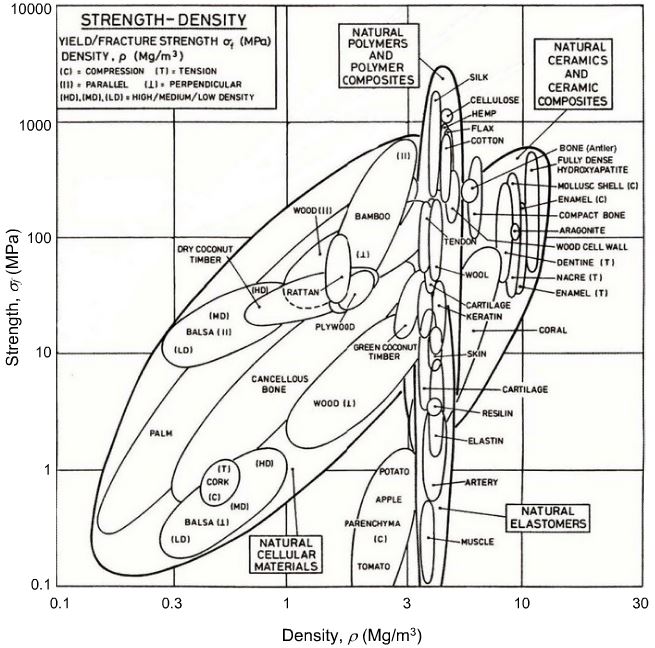Re-use of this resource is governed by a Creative Commons
Attribution-
NonCommercial-ShareAlike 4.0 International
https://creativecommons.org/licenses/by-nc-sa/4.0/
NonCommercial-ShareAlike 4.0 International
https://creativecommons.org/licenses/by-nc-sa/4.0/

Biomaterials
User's Guide:
✔ Click on the shaded materials on the map for demonstration and compariso
✔Drag the merit index lines to minimise (i.e. bottom right) and maximise (i.e. top left) the indices.
✔ Click on the shaded materials on the map for demonstration and compariso
✔Drag the merit index lines to minimise (i.e. bottom right) and maximise (i.e. top left) the indices.
Guide lines for minimum Weight Design
Apple
Play
Close
Apple flesh needs to have low strength as it must
be easily broken or eaten in order for the apple seeds to be released.
Tendons have much greater strength than muscles, as tendons
are used in the body to transmit forces from muscles to bones to move
the bone. Tendons have much smaller cross-sections than muscles or bones.
Whereas muscles contract when the joint is moved, tendons stay relatively
inert. As a result they must not deform under greater forces than those
acting on muscles. If tendons weren't strong, when muscles contracted
they would be permanently deformed and the bone wouldn't be moved. Tendons
have high strength as they contain a large dry weight of collagen and
only a small percentage dry weight of elastin. This allows them to transmit
tensile forces with little stretching, and hence no plastic deformation.
Close
Close